The Perfect Junior Big Boat Trainer
Published on March 15th, 2017
Peter Becker, head coach of the Young American Junior Big Boat Team, reports how the success of their program begins with the boat.
American Yacht Club (Rye, NY) has had an active junior big boat program for generations which traditionally overlapped with the eight-week-long junior dinghy program. However, in 2013, Rob Alexander and myself teamed up to supersize the program by expanding the junior’s racing season from spring to fall, setting the juniors up to race against the adult-sailed boats.
The philosophy was to do as much distance racing as possible and to “hand the juniors the keys to the boat,” thus giving the juniors full command (within reason). Peter and I figured that a J/105 was the perfect trainer for the juniors, and Joerg Esdorn’s J/105 Kincsem was available. The boat was purchased by a syndicate of members with the specific intent to be exclusively used by the junior big boat team. Young American became the boat’s new name.
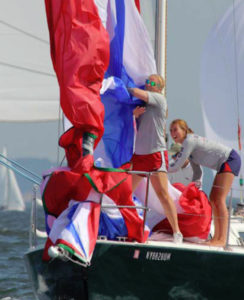 The Young American Jr. Big Boat Team has 30-35 enrolled junior sailors between the ages of 13-18. The team competes from spring to fall in every race possible: distance races, one-design races, and club evening non-spinnaker races. The boat is also sailed by the juniors in the annual club’s weeklong cruise. Over the course of the summer, Young American has been typically sailed in 50-70 race days, providing in excess of 300-person days of sailing.
The Young American Jr. Big Boat Team has 30-35 enrolled junior sailors between the ages of 13-18. The team competes from spring to fall in every race possible: distance races, one-design races, and club evening non-spinnaker races. The boat is also sailed by the juniors in the annual club’s weeklong cruise. Over the course of the summer, Young American has been typically sailed in 50-70 race days, providing in excess of 300-person days of sailing.
Some of the great successes the junior team has had with Young American is with distance racing. Over the last four years, Young American has been a multiple winner of all of the various Stratford Shoal races. For distance races, the boat is equipped with an A3 spinnaker and a second spinnaker halyard. In 2015, Young American had a banner year, not only winning the Block Island Race overall (PHRF) but also winning the prestigious New England Lighthouse Series Trophy which is the culmination of the scores from the Vineyard Race (1st class), Around Long Island Race (1st class, 2nd overall) and the Block Island Race (1st class, 1st overall).
The one-design racing has been the most difficult for the junior team to master. Since we are rarely sailing with the same crew members with the same lineup, each race day often presents a new set of training opportunities and challenges. While this is perfect for creating high-level training, it makes it very difficult to sail a series with consistent finishes. To date, Young American’s best one-design placing has been third place, which she has scored now in multiple series. The junior team had a fantastic time participating in the 2016 J/105 North American Championship held at Larchmont Yacht Club in an incredibly windy regatta.
The Junior Sailing Association of Long Island Sound holds two big boat races that are an all-junior event: the Dorade Race and the Beach Point Overnight. The J/105 has become the standard-bearer and the go-to boat for most of the junior programs so much so that despite the fact that the Dorade Race is a PHRF event, the J/105s compete as a one-design fleet.
Following are comments and stories from some of the juniors who have participated in the program (who are now graduated), and Carina and Collin who are instructing junior big boat sailing at other clubs. Richard is hoping to head to Navy sailing. The J/105 training prepared all who participated in the 2016 Newport Bermuda Race as a predominantly junior crew sailing High Noon, winning line-honors (1st in class and 3rd overall).
Carina Becker, 2016 Graduate of the Young American Jr. Big Boat Team:
My first time sailing a J/105 was around the buoys, competing against our local J/105 fleet of almost 10 boats. This fleet is one of the strongest fleets on Long Island Sound, and the fleet never passes up the opportunity to race hard. Through the years, I have gotten to know many of our fellow J/105 sailors. In particular, Paul Beaudin, our J/105 Fleet Captain, has always been supportive of our junior team and of Fleet #6.
In 2015, Paul put together a crew made up from our local fleet to compete in the J/105 North Americans in San Francisco. Being part of this crew, racing with (not against) some of Young American’s biggest home competitors was an amazing experience. While the North American racing was cutthroat with almost 30 boats on the line, the way “Team New York” came together to represent our home fleet shows the camaraderie the J/105 community holds.
Having such an amazing group of sailors to race against has made my experience in the J/105 outstanding. These boats, when used for junior programs like Young American, produce sailors who love the sport for what it is and what they want to make of it. I hope that more people (and juniors) will join in with the opportunities and friendships associated with a J/105 fleet.
Richard O’Leary, 2016 Graduate of the Young American Jr. Big Boat Team:
The J/105 acts as the foundation of the American Yacht Club Jr. Big Boat Team. Most of what I know about big boat racing is attributed to my first summers spent racing on Young American. The J/105 makes it possible for a crew of predominantly 14- to 16-year-old kids to race competitively against juniors and adults alike. The fact that Young American has a tiller makes the boat more approachable for those of us used to dinghy sailing.
Summer racing means the boat sees plenty of use from the junior sailors, with Can One Evening races every Thursday night and the Sunset Series on Fridays, in addition to the many other races throughout the season. I even had the opportunity to act as “owner’s rep” for the Boston University Sailing Team on their training day for the Storm Trysail Intercollegiate Offshore Regatta a few years ago. A 15-year-old teaching college students about the J/105 was an experience that was bizarre but rewarding nonetheless.
Whether two or twelve juniors show up to sail on a given day, and the J/105 somehow manages to stay the perfect educational platform and a really fun boat to sail.
Collin Alexander, 2015 Graduate of the Young American Jr. Big Boat Team:
The J/105 is an all-around perfect boat for juniors to learn how to sail big boats and for junior programs in general. My experience with J/105s goes back before my time sailing on Young American, where an AYC member loaned his J/105 War Horse to the junior program. Today I think so highly of the design of the boat that I recommended it to the Riverside Yacht Club’s big boat program where I now am an instructor. I am glad to say that they hooked one up for this upcoming summer.
The J/105 has a nice balance of sport and safety. You can get one of those bad boys planing in enough breeze at the right angle. They are super fun boats to race, and they are certainly not the “slow beasts” that those that do not know sometimes make J/105s out to be. They have a fair PHRF rating, and I can remember pushing ourselves to our limits while we were distance racing, sometimes a hundred miles behind, knowing our efforts would pay off. Not many ratings are like that.
On the flip side, I have witnessed a J/105 heel so far over that the mast touched the water, only to right itself and keep on going. Our team on occasion has been thrown breakdown after breakdown, only for us to bounce back. One time, our main halyard broke mid-race on an upwind leg. We sent our guy up there and managed to fix it with a temporary halyard, and we finished the race with boats behind us. J/105s are seaworthy, and I would be comfortable taking one the distance offshore. They are solid boats and can be distance-raced, something that I found to be very valuable for our team.
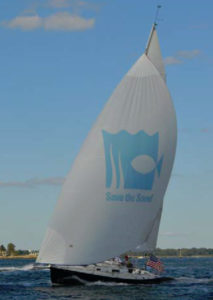 In the Long Island Sound, there are so many that one-design racing is popular and super fun. I remember learning to get competitive and stripping off all the extra gear and stuff from the boat, right down to the minimum required by Class Rules. In a super competitive fleet, we still needed more speed, but it gave our team a taste of what great one-design sailing is really like.
In the Long Island Sound, there are so many that one-design racing is popular and super fun. I remember learning to get competitive and stripping off all the extra gear and stuff from the boat, right down to the minimum required by Class Rules. In a super competitive fleet, we still needed more speed, but it gave our team a taste of what great one-design sailing is really like.
It is small and simple enough that our team has been entrusted with taking care of and maintaining Young American. I remember long and hot afternoons out on the mooring with Key Becker fixing stanchions and trying to figure out what in the world was wrong with our engine. We repaired the boom on one occasion when it just gave out on us one day on the water.
I am not trying to say that J/105s are unreliable…it is the opposite. Young American is old, and boats break. Maintaining Young American taught our team what owning a boat entailed and gave us valuable experience with repairs. J/105s are an all-around type of boat. They are good for buoy racing, distance racing, cruising and educating.
J/105s are also excellent cruising boats. Many of the memories I made with my teammates were not in competition but on the Junior American Yacht Club (JAYC) cruises that we went on. A bunch of us juniors sailed the American Yacht Club cruise, which is a weeklong cruise, on Young American.
We had lots of fun challenges that week which included not having an engine for most of the cruise. We sailed from port to port making it all the way to Newport, RI and back to AYC in Rye, NY. I was only 16, and my parents trusted me with unsupervised overnights on the J/105, and those were perhaps the most fun and educational sails of my life. Imagine that, four boys cruising a J/105 down Long Island Sound with NO ADULTS.
We were in heaven and having a blast of a time. This would not have been appropriate on any other boat; but we knew Young American like the back of our hands, and it was not the most delicate and expensive boat out there either.
In regard to the Jr. American Yacht Club Big Boat Program, we had a blast. It was led by my father, Robert Alexander, and Peter Becker. Other adults definitely helped along the way. Doug McKeige, Mark Ploch and basically every parent contributed. Those four were the guys who went on the races with us kids. Each taught me to be a proper helmsman and competent in every position. I would like to thank those adults and especially my father; without him, our program would not have been successful. These guys are some talented sailors.
You have to have some guts to head into certain danger with a bunch of kids. I think of one windy overnight race when the junior team sailed a New York 42. It was a crazy adventure but in retrospect, I can only think of the adults who were willing to be responsible when things went wrong. They must have had serious confidence in their abilities and in our abilities as junior sailors.
The success of our team reflects Rob and Peter’s own seamanship. They have taught us everything from navigation to spinnaker trimming. The secret to our team was that we went out and actually did it, by ourselves and frequently. It starts and ends with the J/105 Young American—she taught us everything a junior needs know about big boat sailing.
Source: http://j105.org/wp-content/uploads/2016/01/2017-1-Winter.pdf


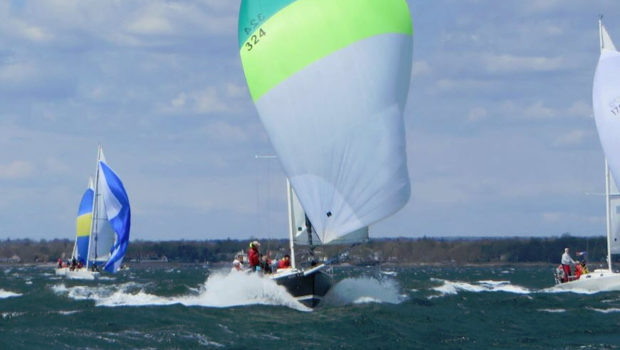

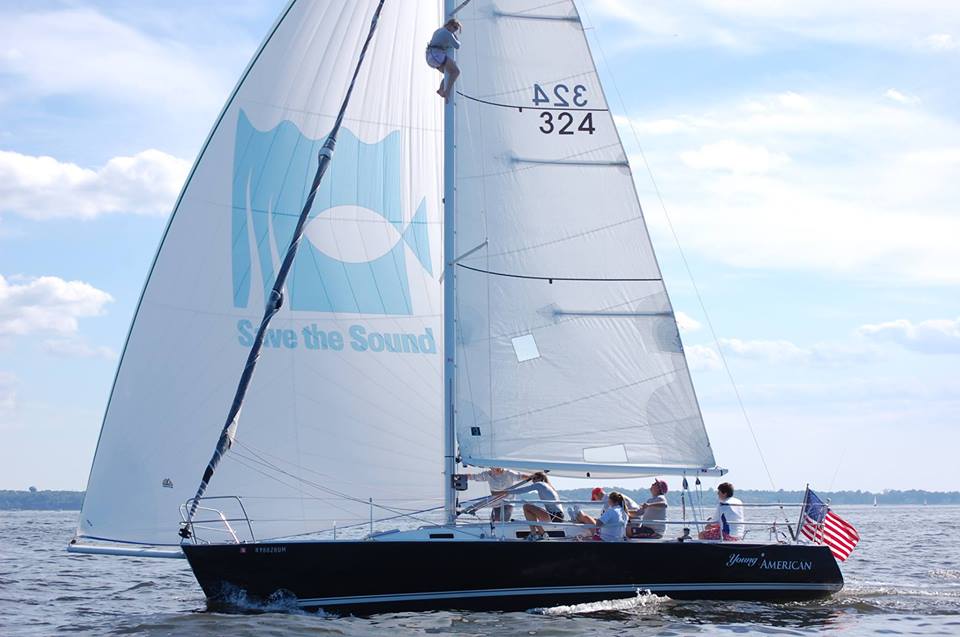

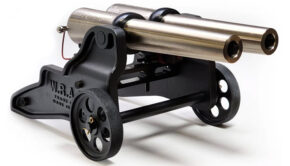
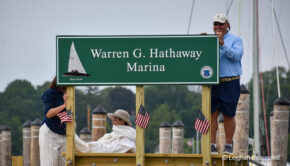
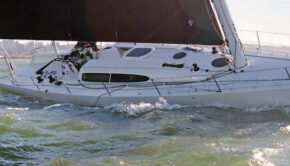

 We’ll keep your information safe.
We’ll keep your information safe.